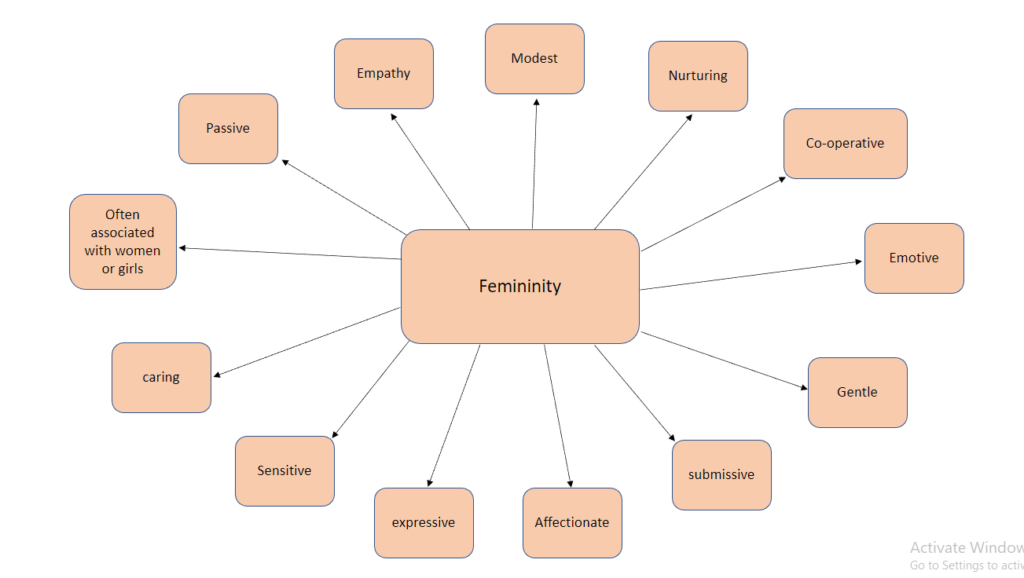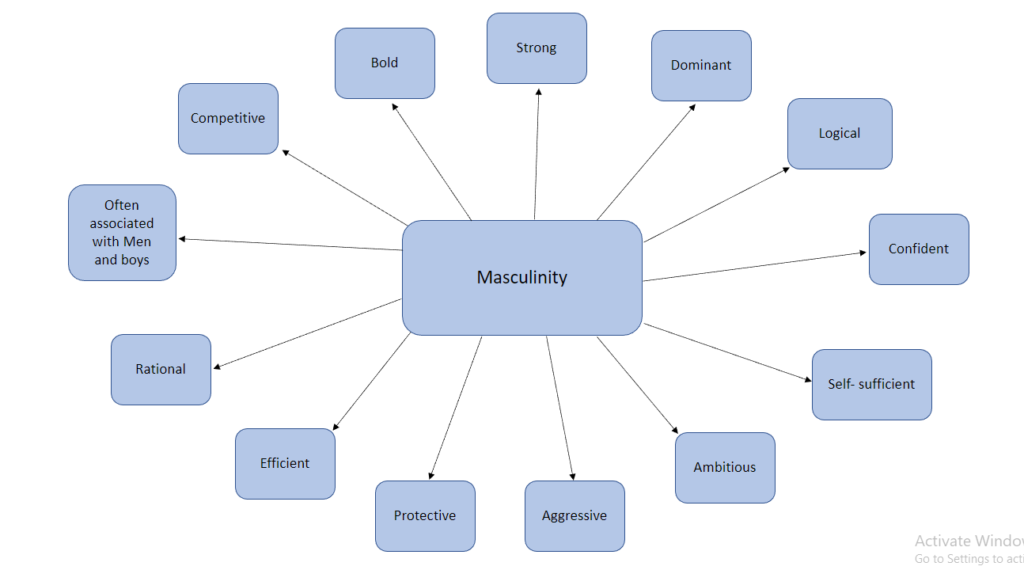Femininity
mind map:

mood board:

Masculinity
mind map:

mood board:

Femininity
mind map:

mood board:

Masculinity
mind map:

mood board:

Task
THEMES: Define “femininity” and “masculinity” and explain how identity can be influenced by “place”, or belonging, your environment or upbringing with reference to gender identity / cultural identity / social identity / geographical identity / political identity / lack of / loss of identity / stereotypes / prejudices etc.
Femininity
Femininity is a set of attributes, behaviours, and roles that are often associated with women and girls. Femininity is usually understood as a social construct, and is heavily influenced by both cultural factors and biological factors.
Femininity is usually shaped by the environment as it often changes depending on different areas in the world. For example, in the UK the standard is to be slim with large eyes and defined cheek bones while in Africa it is preferred to be curvaceous. Likewise, the concept of femininity brings about different stereotypes regarding women such as; viewing women as property or women being weak and more emotional than men.
A more modern and common type of social identity for femininity would be online on social media. While on apps such as Instagram, women are presented with the beauty standards and will often receive hate if they fall outside of that category. Women are often viewed as objects of sex meanwhile on world wide advertising women are more often shown for cosmetics or domestic products.
Masculinity
Masculinity is a set of attributes, behaviours, and roles often associated with men and boys. Typical traits of masculinity include attributes such as strength, dominance and aggression.
Masculinity can often be shaped by the environment, for example in the UK, masculinity is currently associated with more negative traits like aggression or ignorant. Masculinity has also changed over time too, for example in the 17th century men were the sole providers for their family and held majority of the power in the relationship. However, now days relationships are viewed as equal, and there is not as much pressure on men to be the sole providers.
While views on masculinity have certainly changed over time, the concept of masculinity definitely still holds a lot of power over today’s society, with around 65% of all leadership positions being given to men.